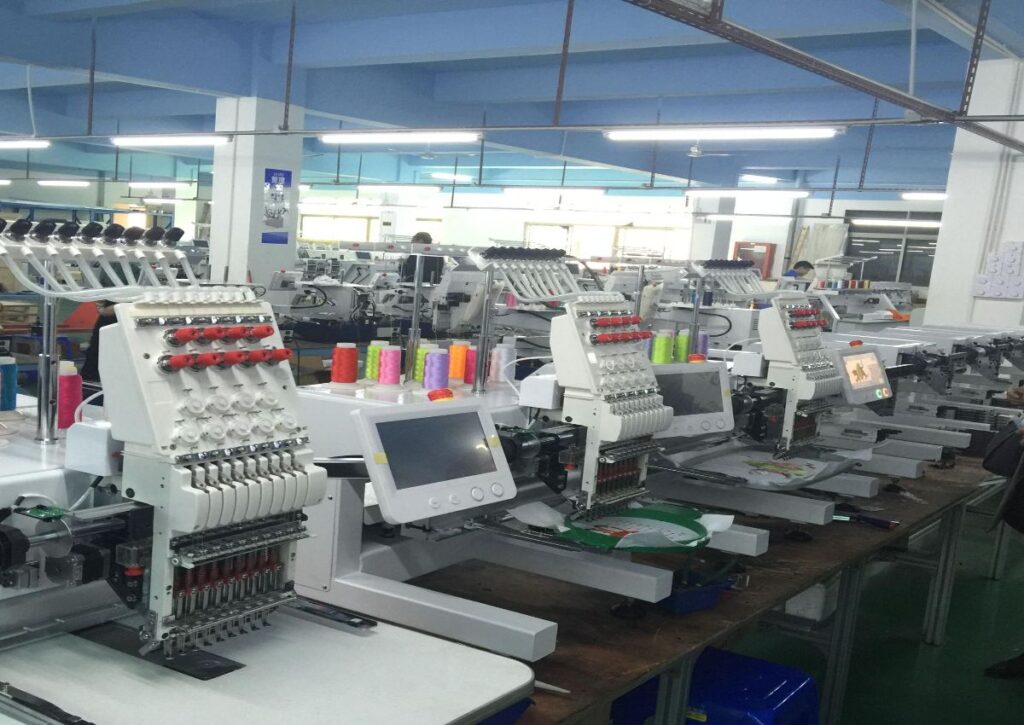The world of embroidery has exploded with technological advancements. Gone are the days of solely relying on hand-stitched patterns. Now, a dazzling array of embroidery machines and digitizing software allows you to bring intricate designs to life on fabric. Embroidery has evolved with technology, offering various machines and digitizing software to enhance creativity and precision. Understanding the different types of embroidery machines and digitizing software is essential for achieving professional results. Popular embroidery machines include Brother SE600, Janome Memory Craft 500E, and Bernina E 16 Plus, which are known for their reliability and advanced features. Leading digitizing software such as Wilcom, Hatch, and Brother PE-Design provide powerful tools for converting designs into machine-readable formats.
Like everything, even in the embroidery business offering custom embroidery digitizing services, we have different types of machines used for making embroidered logos, patches, designs, badges, etc. Now, each machine has its unique way of embroidery, and they have their own way of sewing. Some of the famous embroidery machines are:
1. Brother PE540D
2. Janome 12000 Memory Craft
3. Singer Futura XL-400
4. Brother DZ820E
5. Janome Memory Craft 200E
6. Brother SE400
7. Singer SE300
8. Brother PE770
Since there are different machines, it means there will be different digitizing software, and one single software will not be compatible with all the machines. Each machine will have its own loops and stitch method, so that, one has to choose the digitizing software or vice versa.
Some of the commonly used digitizing software are:-
1. SewWhat-Pro (SWP}
2. Thred
3. Size It! By Amazing Designs
4. Punto Embroidery Digitiser
5. PE-Design by Brother
6. Millennium III by Proel TSI
7. MasterWorks Lite by Designer’s Gallery
8. Monogram It! By Amazing Designs
9. Letter It! By Amazing Designs
10. Hatch Embroidery by Wilcom
11. Generations Automatic Digitizing Software by Notcina Corporation
12. Floriani Embroidery Suite by G7 Solutions & RNK LLC
13. FontWorks by Designer’s Gallery
14. EQStitch by The Electric Quilt Company
15. EmbroideryWare by JimmySoft LLC
16. EmbroideryStudio by Wilcom
17. Embroidermodder
18. Embrilliance StitchArtist, BriTon Leap, Inc.
19. Embird
20. Elna DigitizerEX by Elna, Inc.
21. Elna CustomizerEX by Elna, Inc.
22. Digitizer MB by Janome
23. DG/ML by Pulse Microsystems
24. Digitize ‘N Stitch by Amazing Designs
25. Creative DRAWings by DRAWSTITCH Ltd.
26. Creative 4D Design Creator by Pfaff
27. BuzzEdit v3 by Buzz Tools Inc
28. Buzz-2-Stitches by Buzz Tools Inc
29. Brother BES4 Dream Edition Embroidery Lettering Software
30. Bernina Embroidery Software Version 7 by Wilcom
31. AutoPunch by Singer
32. Applique It! by Amazing Designs
Each embroidery digitizing software produces unique file formats compatible with specific machines, essential for creating patches and other designs. These file formats are categorized into two types: source formats and machine formats.
Source formats are the primary file formats used by the embroidery digitizing software. They are highly editable, allowing for easy design resizing, editing, and scaling. This flexibility is crucial during the design phase, enabling digitizers to make precise adjustments and perfect their creations.
Machine formats, on the other hand, are specific to particular brands of embroidery machines. These formats are not as easily editable as source formats, typically used in the final production phase. Once a design is converted to a machine format, it is ready to be embroidered by the machine, but adjustments to the design itself are limited.
Here are some embroidery machines and the source file formats which run on them:-
1. PES – Babylock/Brother
2. SEW – Elna/New Home, Janome 8000/9000
3. HUS – Viking 1+/Rose/Iris/Scandinavia
4. SHV – Viking Designer 1
5. ART – Bernina Artista
6. JEF – Janome 10,000/11,000/300E/350E
7. XXX – Singer
8. PCS – Pfaff
9. EMD – Elna/Singer
10. VIP – Viking/Pfaff
11. VP3 – Viking/Pfaff
12. DST – Tajima
13. CSD – Singer
14. PSW – Singer
Typically, embroidery machines support one or two specific file formats unique to their brand. However, certain formats have gained widespread popularity and acceptance, becoming industry standards due to their effectiveness and versatility. For instance, the .dst format of Tajima, the exp/cnd format of Melco, and the .fdr source format of Barudan are so universally recognized that they are often supported by a wide range of embroidery machines, even those from rival companies.
These formats have transcended brand boundaries and are now considered universal digitizing formats. Their compatibility with most embroidery machines worldwide makes them indispensable tools for digitizers. This universal support simplifies the process for those working with multiple machine brands, ensuring that high-quality designs can be easily shared and executed across different equipment. This flexibility and industry-wide acceptance highlight the importance of these formats in the embroidery digitizing world.
I hope this post sheds light on the various types of digitizing software and embroidery machines. Achieving the perfect patch requires a harmonious blend of skill and technology. By understanding the capabilities and features of both the software and the machines, you can create stunning, high-quality embroidery that meets your creative vision.

